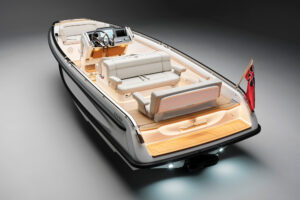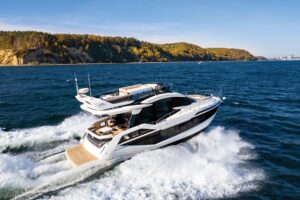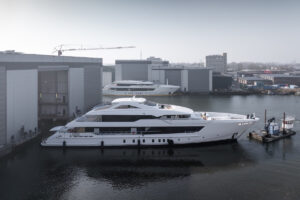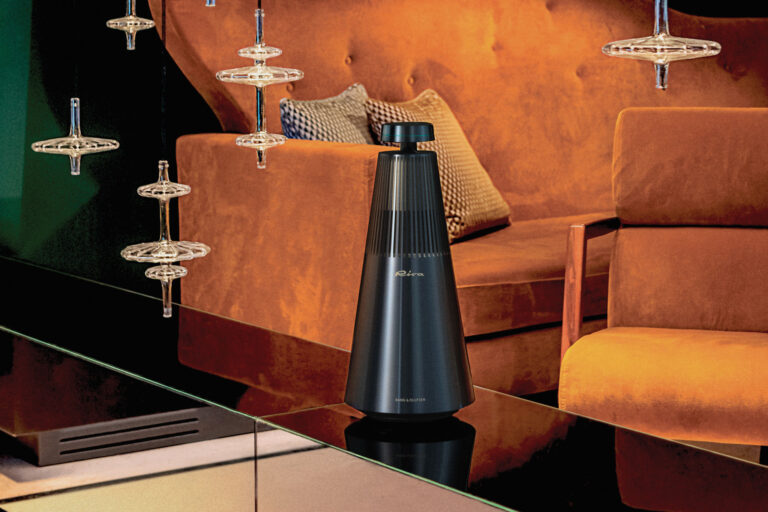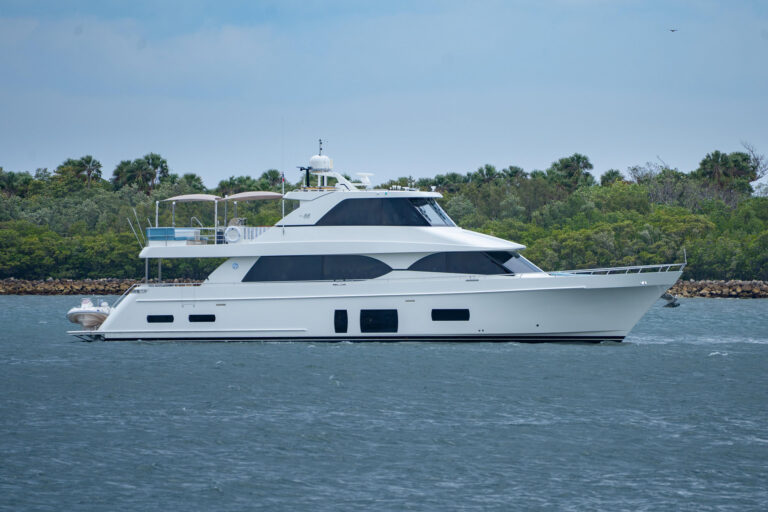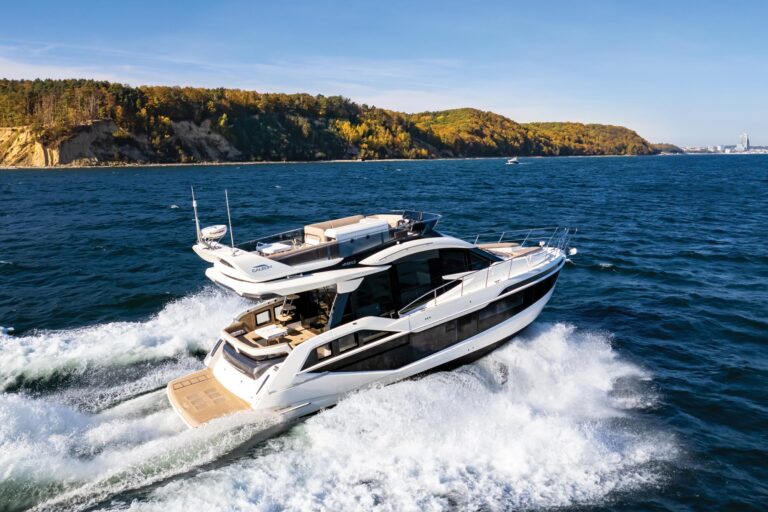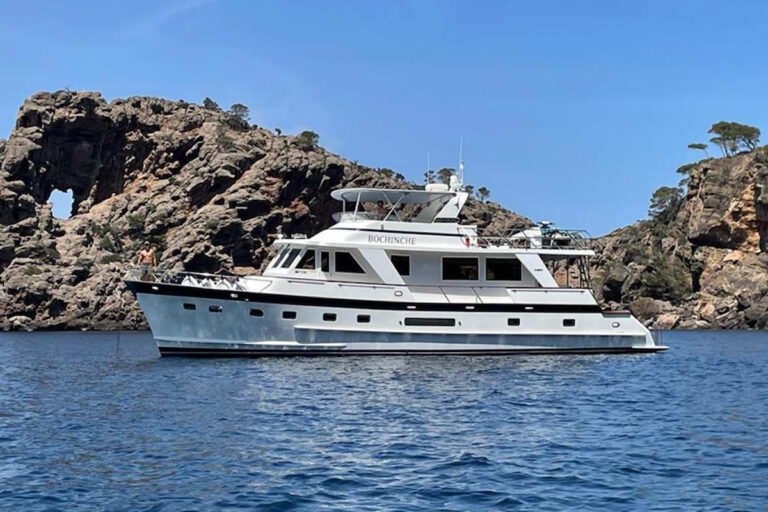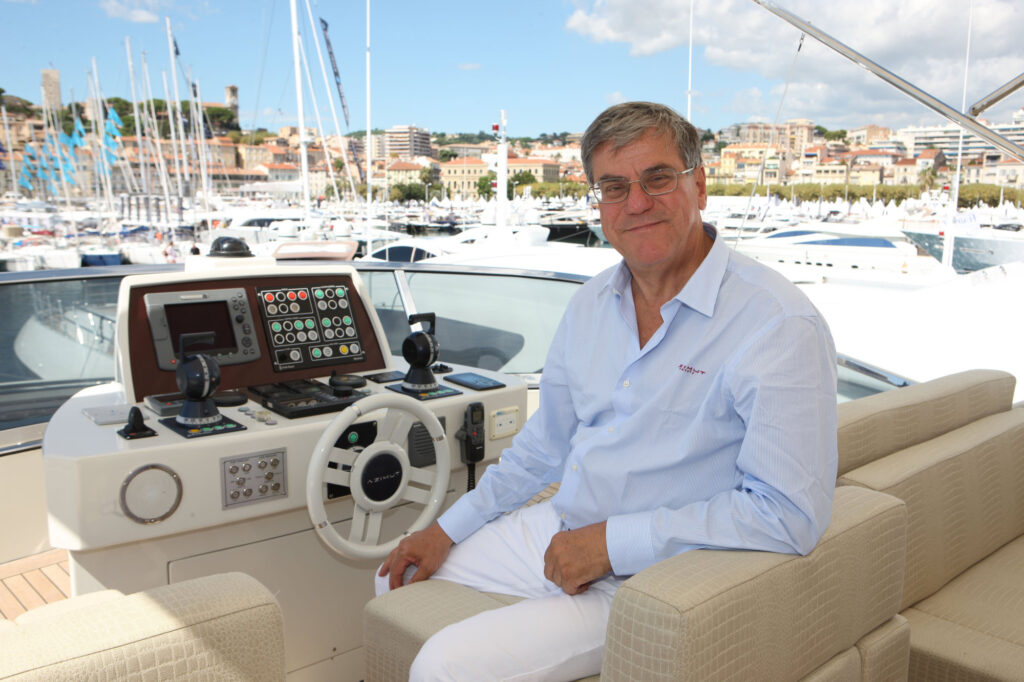
Paolo Vitelli, who founded Azimut Yachts and went on to create the powerhouse Azimut-Benetti Group, died December 31, 2024. According to local news reports, he suffered a fall at home in Italy. He was 77.
Vitelli was born in Turin, Italy, in 1947. His family included numerous entrepreneurs, but his father, seeing Vitelli’s performance in school, lacked confidence in him and once suggested that he manage a telephone company. Instead, Vitelli went to London, learned English and discovered the nightclub scene. He tried to replicate it in Italy by opening his own nightclub there.
The young Vitelli then used his earnings from that venture to rent a boat and explore the coast. He loved the experience and became such a frequent renter of boats that people started asking him how to do it.
So, when he was 21 years old, Vitelli founded Azimut Srl as a sailing and yacht-chartering business, before he had even graduated from his studies in economics and commerce. In later years, Vitelli described showing his father Azimut’s first balance sheet, making his father proud.
At first, Azimut Yachts was a brokerage and then an importer of boats, bringing models into Italy from shipyards based in Northern Europe and England. It was an era when the mass production of reliable, safe boats was still evolving on both sides of the Atlantic, with leaders in the modern recreational marine industry still establishing basic standards for how boats should be built. Vitelli’s timing upon entering the marketplace coincided not only with the public’s desire to have boats they could count on, but also with an increasing appreciation for Italian taste and style.
Vitelli launched a series of Azimut-built boats in the mid-1970s, including his first model, the AZ 43 Bali. It was built in fiberglass, a material that, by then, was beginning to dominate boatbuilding all around the world.
He followed that model in 1977 with the AZ 32, which captured boaters’ imaginations thanks to features that many people take for granted today, such as a raised wheelhouse and an opening sunroof. Back then, those types of features could be considered significant creature comforts. Years later, Vitelli told the Financial Times that “those early boats were for sending people to sea. They were not for luxury living.”
Still, those early successes encouraged Vitelli to expand the Azimut range, which was as small as 26 feet length overall and soon went up to the Failaka 105—at the time, the largest fiberglass boat ever built, ushering in an era of mass production for larger fiberglass yachts. Various hulls of the Failaka 105 were sold to prominent people worldwide, including a Middle Eastern prince and the Onassis family.
Vitelli had gained a solid foothold for exporting boats to North America and other parts of the world, including Southeast Asia and the Middle East—putting his company in a position to capitalize when a major opportunity emerged for expansion.
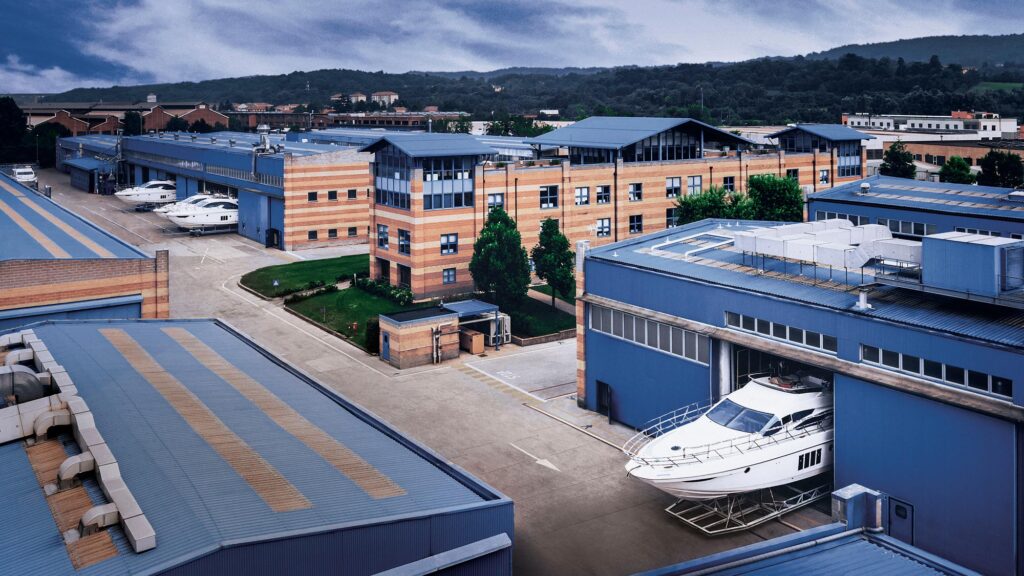
Acquisition of Benetti
Vitelli supercharged the future of his business in 1985 with the acquisition of another Italian brand: Benetti.
Viareggio-based Benetti had been turning out everything from commercial vessels to private yachts for more than a century, and had gained international fame with the launch of the 282-foot Nabila. At the time, Nabila was the largest private yacht in the world. It had a futuristic silver hull that turned heads in every harbor, and it had been shown in the James Bond film Never Say Never Again—but it also represented a financial loss for Benetti, which ended up filing for bankruptcy after the delivery.
Vitelli purchased what was left of Benetti, scooped up the yard’s reputation for innovation, and merged the businesses into Azimut-Benetti Group. That move laid the groundwork for the company that today reports revenues of about $1.3 billion and 20 percent share in the global megayacht market.
Achieving the current level of success took decades more work. Vitelli focused on innovations, expansions and promotions throughout the 1980s, 1990s and 2000s. He embraced competition at a time when all kinds of advancements were being made in powerboat design and systems creation, with the need to stay at the forefront of technology and onboard enhancements remaining a constant factor.
For instance, in 1988—when numerous powerboat enthusiasts and builders were competing to cross the Atlantic Ocean—Azimut’s Atlantic Challenger powerboat made headlines for achieving the goal without needing to refuel mid-ocean.
Vitelli explained in a book about the Italian boatbuilding industry: “The purchase of Benetti gave Azimut worldwide resonance. It seemed to me the time to do something to consolidate and expand this reputation with a valid initiative in terms of communication and technology. I decided to launch a challenge to cross the Atlantic without refueling and win the prestigious award for the fastest Atlantic crossings, the Blue Ribbon.”
In the 2000s, Vitelli continued to make acquisitions, such as purchasing the Italian shipyard Gobbi. In 2009, Azimut-Benetti acquired the Brazilian yachtbuilder Intermarine. Vitelli added all the knowledge and capacity from those companies into Azimut-Benetti Group’s overall operations.
Vitelli also became among the more vocal champions of eco-friendly powerboating. He talked frequently about how he cruised in the Mediterranean each summer and thought the entire coastline could be better protected for future generations to enjoy. He explored the use of emerging technologies, from propulsion to high-performance hull design, and began to incorporate carbon fiber into the boatbuilding process as a way to reduce vessel weight for better fuel economy.
Benetti launched its first diesel-electric yacht in 2006: the 213-foot Ambrosia. In 2009, Azimut introduced its Magellano collection as an eco-friendly, long-range cruiser with bigger windows and guest spaces, more substantial galleys and extra stowage. The first model was the Magellano 74, marketed as a crossover yacht for all-weather cruising. Vitelli said at the time that the collection demonstrated “a trend away from show-off boats and an increase in the desirability of slower styles of yachts.”
Another advancement came in 2015, when the Azimut Fly 72 launched with an all-carbon superstructure, increasing volume and reducing weight in ways that continued to enhance the onboard experience along with efficiency underway.
In 2019, Vitelli revealed that he had been working with Siemens to develop a hybrid propulsion system with a goal of saving as much as 15 percent on energy use while allowing for silent cruising.
Creative thinking was also a constant element in discussions about how to design and construct larger models. Significant investments in shipyards and staff allowed Benetti to deliver three “gigayachts” in just 100 days during 2019, with each yacht being more than 325 feet long.
In 2021, Azimut’s Grande Trideck launched with not one, but four levels of cascading terraces, augmenting the trends in ever-expanding aft beach clubs. By 2022, when Hull No. 1 the Benetti B.Yond 37M appeared at international yacht shows—sporting Vitelli’s vision of combining a steel hull, long range, immense volume and four decks into just 121 feet of length overall—about a dozen contracts had already been inked for the model.
And, true to Vitelli’s earliest roots in the industry, recent years also saw the creation of the Azimut Charter Club, with a concierge service to help people book newer-model Azimuts for rental experiences. Just as he had started by renting boats himself, Vitelli continued to see value in helping today’s vacationers experience the cruising lifestyle.
“He had an overabundance of excitement about creating boats and coming up with ideas about boats,” says Yachting Editor-in-Chief Patrick Sciacca. “There are people who have jobs, and there are people who have purpose. He had an energy that flowed off of him. He loved what he did. You could feel it.”
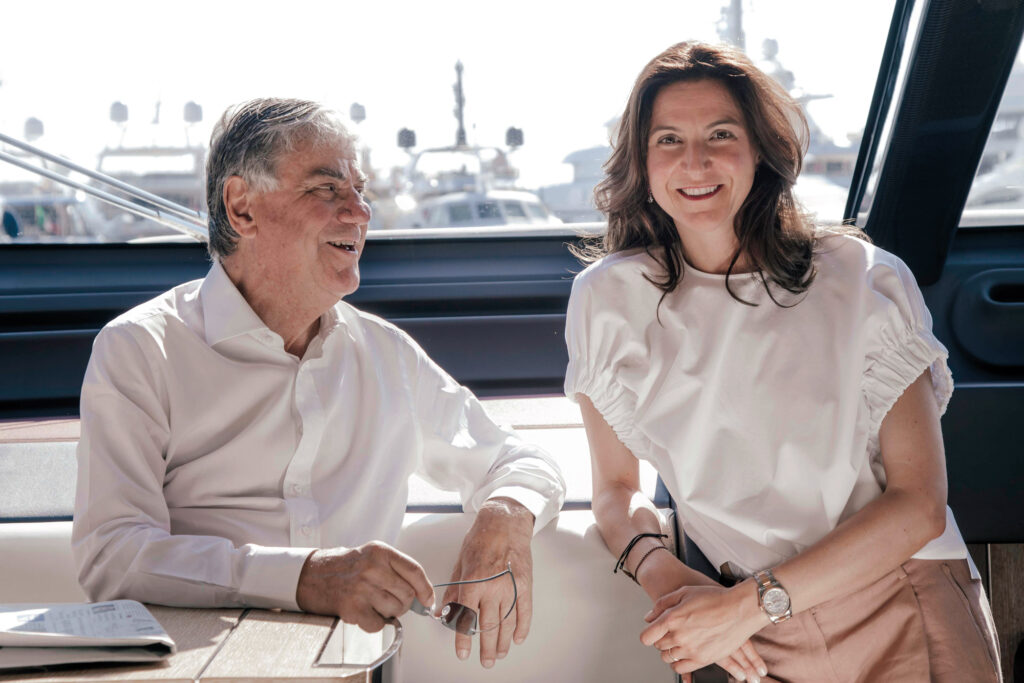
A Legacy Built to Last
In 2023, Vitelli’s daughter, Giovanna Vitelli, succeeded her father and became chairwoman of Azimut-Benetti Group—a fact that Paolo Vitelli said made him immensely proud, as he was able to hand over the family-run company with no major drama, no significant restructuring, and no intervention from banks.
His vision of eco-friendly cruising remains core to the Azimut-Benetti Group’s future plans, with work being done on HVO biofuel and hybrid technologies. Half of Azimut’s fleet includes low-emission yachts with four levels of electrification, including full hybrid. Benetti offers hybrid versions of almost its entire range; in just the Benetti B.Yond line, among the 13 units sold, seven are hybrids. That B.Yond line achieves significant carbon-dioxide reductions compared to conventional yachts, as does the Azimut Seadeck series.
Less than a month before Vitelli’s death, Azimut-Benetti Group signed an agreement with Ogyre, aiming to collect 18,000 pounds of plastic from the seas during 2025 and launching a feasibility study about the future collection of marine waste.
Giovanna Vitelli recently marked the quarter-century history of the group her father created by saying: “Twenty-five years at the top of the sector represent a true record within a record, a testament to our unwavering entrepreneurial vision which is based on an organic, resilient and sustainable growth strategy aimed at creating durable value that lasts over time.”
Resilience and an entrepreneurial vision were themes that Paolo Vitelli often spoke about himself. About five years ago, he told Superyacht Times that he saw a kindred spirit in Phil Knight after reading the Nike founder’s memoir Shoe Dog: “He basically says that success is based on overcoming adversity through determination and teamwork. I can vouch that these are the exact same factors behind the success of Azimut-Benetti.”
Around the same time, Vitelli told Daily Nautica that his life story was similar to the stories of countless other entrepreneurial people who strived to build and create, moving from one idea to the next: “As happens to all real entrepreneurs, after having reached an objective, I thought of the next one, and the next. Now, close to retirement age, I love to still dream big.”
As of financial year 2023-24, Azimut-Benetti Group had a backlog of orders that should keep the shipyards Vitelli developed busy into 2029, with a 2024-25 revenue target of about $1.56 billion.
Upon the news of Vitelli’s death, publications worldwide called him a “global leader,” the “yacht king” and a “titan” of the yachting industry.
“His passion made him very special in this industry,” said Yachting’s editor-in-chief. “He took a lot of joy in always looking to create something new that people hadn’t seen before.”
When will memorial services be held for Paolo Vitelli? Details had not been announced as of this writing. Tributes and additional information are expected in the coming days at azimutbenetti.com

